2017 Power 5 Preview: 41-48

For 2017, instead of previewing conferences division-by-division, I decided to rank the 64 Power Five teams and count down from the bottom.
I created a ranking system based heavily off of Bill Connelly’s S&P+ rankings: half of the ranking comes from the S&P rankings from the past five seasons among Power Five teams (1/3 of that number is 2016’s ranking; 1/3 is the average from 2014-2016, 1/3 is the average from 2012-2016); half comes from two component parts of his 2017 S&P+ projections, weighed evenly – recruiting impact and returning production – and ranked 1 through 64. The ranking itself skews towards emphasizing where the teams were according the 2016 S&P+. I think it serves as a decent way to sequence these previews.
(Note: I didn’t include Notre Dame.)
Previously: #64 Purdue, #63 Rutgers, #62 Kansas, #61 Illinois, #60 Boston College, #59 Virginia, #58 Vanderbilt, #57 Syracuse. #56 Maryland, #55 Arizona, #54 Wake Forest, #53 Duke, #52 Iowa State, #51 Texas Tech, #50 Missouri, #49 Oregon State.
48. ARIZONA STATE
#5 Pac-12 South, #10 Pac-12
5-7 (2-7) in 2016
Maybe Todd Graham should have bailed when he had the chance. The notorious job-hopper has been in Tempe for a half-decade now, and after two straight seasons with a losing record, his job security is tenuous. Graham won ten games in 2013 and 2014; in 2013, they won the Pac-12 South and in 2014, it came down the last weekend of the season – they lost by a touchdown on the road to rivals Arizona. The trajectory for both programs (utter freefall) has been quite similar – they were both in the Top 15 for that game in 2014, and both of their coaches are now on the proverbial hot seat.
Graham’s 5-7 campaign last season was more disastrous than the record indicates: they started the season 4-0 and 5-1, though all of those wins came against bad teams, and all but one of their Pac-12 losses came by three scores or more – including a season-ending 56-35 defeat at Arizona, a team that hadn’t won a conference game all season. That loss prevented ASU from reaching a bowl game for the first time in Graham’s tenure. It’s worth mentioning that injuries, particularly to the QBs, definitely played a role in Arizona State’s slide.
QB Manny Wilkins showed some promise and he’ll be joined by blue-chip Bama transfer Blake Barnett at the position in 2017 – surely the Sun Devils will get better play from the position than they did last season, when they were forced to turn to a fourth-stringer. RB Kalen Ballage – a versatile bruiser who scored 8 touchdowns against Texas Tech last season – but ASU ran for just 3.3 yards per carry as a team last season. Sophomore WR N’Keal Harry showed off his blue-chip potential in 2016 and could be a star.
Arizona State’s had a very aggressive, blitz-heavy scheme since Graham arrived, and that led to a ton of big plays against the Sun Devils last season. Only one starter returns in the secondary – box safety Marcus Ball, who was second on the team in tackles – and dealt with some unexpected attrition as well. Graham brought in former Baylor DC Phil Bennett to fix the defense, but the Sun Devils would have to improve a lot to approach respectability.
Like Rodriguez, Graham will have to show some results this season: there’s talent on offense and if the line improves, ASU will probably put up big numbers on the scoreboard. Still, the defense was terrible a year ago and they’ll have a tough time with the many explosive offenses on the schedule this season. A lot rides on if Bennett is able to turn things around quickly.
47. CAL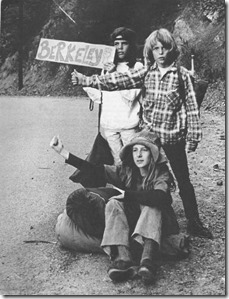
#5 Pac-12 North, #9 Pac-12
5-7 (3-6) in 2016
When Cal replaced longtime head coach Jeff Tedford with Sonny Dykes, they committed to overhauling the program’s identity and embracing the “Bear Raid” aerial offense that Dykes had at Louisiana Tech. Long story short: it didn’t work. Cal went 1-11 in Dykes’s first season as the roster turnover basically ensured a lost season; his combined 18-19 mark over the next three seasons (despite the presence of future #1 overall pick in the NFL Draft, QB Jared Goff, for two of them) led to his firing following 2016. It was never a great fit – Dykes reportedly was looking around for a different job following the 8-5 campaign in 2015, Goff’s last season, and now the program will be searching for a new identity after hiring away DC Justin Wilcox away from Wisconsin to be its head coach.
Wilcox made a great offensive coordinator hire by luring former Eastern Washington head coach Beau Baldwin away from one of the best programs at the FCS level. Baldwin will be looking for a new QB after one-year grad transfer rental Davis Webb’s departure; Webb was a very solid Goff replacement and it stands to reason that Cal will take a step back at the position with an unsettled situation there. The Bears’ top RB and WR also are gone, though Dykes left the cupboard full at the receiver position. The offensive line also needs to be overhauled.
The defense was an utter disaster a season ago: the Bears gave up 42.6 points per game and were involved in plenty of shootouts – somehow, they lost three games (against San Diego State, Arizona State, and Oregon State) in which Cal scored at least forty points. They had a six-game stretch in the middle of the season in which they gave up at least 45 points per game, and somehow won one of those games (against Oregon, who had a similarly awful defense). Eight starters return, but Wilcox has a massive rebuilding job after last year’s implosion.
The schedule is difficult: of Cal’s three non-conference games, two are against power conference programs (at North Carolina and home vs. Ole Miss, a program in an incredible amount of disarray) and even though there are some winnable conference games at home – Arizona and Oregon State – them getting to a bowl game would be surprising.
[46-41 after the JUMP]
46. INDIANA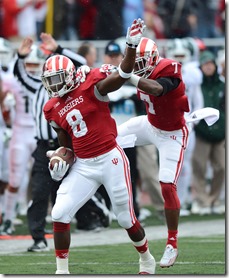
#5 Big Ten East, #10 Big Ten
6-7 (4-5) in 2016
During his six-year stint as Indiana’s head coach, Kevin Wilson gave the program an identity – they had a wide-open hurry-up spread offense that gave opponents fits and usually had poor defenses. Wilson resigned amid allegations of player mistreatment this past season, so the fun #CHAOSTEAM Indiana teams will be a thing of the past. 2016 was already a departure from that identity: IU scored 10.7 fewer points and allowed 10.4 fewer points per game compared to 2015 as the offense slipped and the defense improved.
That trend is likely to continue. Defensive coordinator Tom Allen was brought in before the 2016 season from USF and immediately turned around that unit; he was promoted to head coach when Wilson left. Indiana now has an aggressive 4-2-5 defense that’s very stout against the run, led by star LB Tegray Scales. Spacebacker Marcelino Ball wasn’t highly touted as a recruit, but showed a lot of potential as a true freshman starter last season. Most of the contributors from last year’s defense are back – including the entire secondary, which was better, if still somewhat glitchy – and IU should have one of the better defenses in the Big Ten.
2016’s offensive decline is unlikely to reverse itself. Allen brought in oft-criticized former Michigan and Tennessee OC Mike DeBord, signaling a major change from Wilson’s high-octane offense to a more traditional and conservative scheme. He’ll have Richard Lagow back – a statuesque, strong-armed QB who threw 19 touchdowns and 17 interceptions – as well as the very good WR tandem of Simmie Cobbs and Nick Westbrook. The run game was where the regression was most stark a year ago, and the personnel doesn’t look promising for this season. Lagow’s decision-making (and accuracy) must improve for IU to be able to rely on their passing game, and DeBord’s track record suggests that they might lean to heavily on a mediocre cast of RBs and an iffy OL instead of airing it out.
It’s one of the toughest jobs in the Power Five – Indiana has had just one winning season (7-6 in 2007) in the past 22. Wilson’s appearances in back-to-back bowls in 2015 and 2016 were legitimate accomplishments, even if Indiana went a combined 12-14 in those seasons. Needless to say, Allen’s OC choice was uninspiring at best, but his defense should be good enough to drag them to right around .500 again this season.
45. KENTUCKY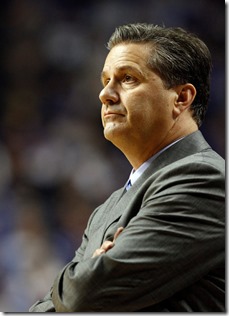
#5 SEC East, #12 SEC
7-6 (4-4) in 2016
Two games into 2016, the Mark Stoops era looked to be on life support – Stoops had gone 2-10 in his first season before turning in back-to-back 5-7 campaigns; in year four, he lost the first two games, blowing a 35-10 lead in the opener to Southern Miss (giving up 34 straight points in the process) and taking a 45-7 loss to Florida on the chin in the Swamp. Stoops had recruited well – especially in Ohio – and reenergized the program, but last September, things looked very bleak.
UK eventually recovered and became bowl eligible, though their first six wins were against mediocre-at-best opponents: New Mexico State, South Carolina, Vanderbilt, Mississippi State, Missouri, and Austin Peay. Only one of those wins came on the road. In the season finale, Stoops got his first signature win as Kentucky pulled a stunning upset at Louisville – future Heisman winner Lamar Jackson fumbled on first-and-goal in a tied game with under two minutes left, and the Wildcats drove the field for a game-winning field goal in regulation to win 41-38.
They have most of last year’s team back, and Stoops could possibly take another step forward in year five. Kentucky eventually learned to lean on its running game in 2016; even though 1,170-yard rusher Boom Williams left early, the Wildcats get RB Benny Snell back – Snell was a true freshman who scored four touchdowns in his debut vs NMSU after sitting out the first two losses. He’s a powerful runner who totaled 1,091 yards and 13 touchdowns last season. QB Stephen Johnson took over for an injured Drew Barker and played better – both are back. A very good offensive line is mostly intact as well.
For a defense-oriented head coach, Stoops’s defenses have been mediocre since he’s been at Kentucky. Nine starters return on that side of the ball – including the four leading tacklers from 2016 – but the front seven gave up over five yards per carry last season and must improve. Mike Edwards is the defense’s best player and racked up a ton of tackles from his box safety spot; UK’s pass defense could be decent again.
Kentucky’s schedule is about as easy as possible for an SEC program (outside of the season finale against Louisville), so Stoops should get them to a bowl game. Breaking into the Florida / Georgia / Tennessee tier in the East would require substantial defensive development and the creation of a more functional passing offense.
44. WEST VIRGINIA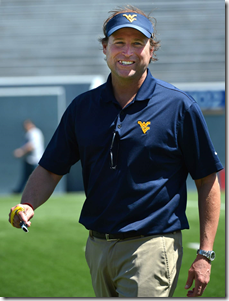
#7 Big 12
10-3 (7-2) in 2016
Dana Holgersen took over at West Virginia in time for their last season in the Big East (10-3 overall, finished 3-way tie for first in the conference, and obliterated Clemson in the Orange Bowl, 70-33), and has led the program for the half-decade it’s been in the Big 12. In 2012, their first season in the league, they ascended to the Top Five in the rankings after starting 5-0, only to be handed consecutive blowout losses; they finished 7-6. From 2012 to 2015, they had an aggregate 15-21 record in conference play and Holgersen’s job seemed to be in jeopardy after such a strong start to his tenure.
Last season, they went 10-3 and finished tied for second in the Big 12 at 7-2 – earning Holgo some security moving forward. They started 6-0 and had home victories over BYU and Kansas State, teams that weren’t hyped coming into the season but finished with nine wins each. Uncompetitive losses to each of the Oklahoma schools – including an embarrassing 56-28 November loss in Morgantown to OU in a snowstorm – ultimately prevented the Mountaineers from getting a share of the Big 12 title.
Still, double digit wins and their best finish as a member of the conference represented a significant success. Five teams from the 2011 Big East joined the Power Five: Rutgers has been an unmitigated disaster in the Big Ten, Syracuse has been poor in the ACC, and Pitt and Louisville have been pretty decent in the ACC. Before last season, it seemed as if West Virginia was going to settle into the lower levels of their league – ahead of Kansas and Iowa State, but not challenging teams in the upper reaches of the conference. Their 2016 season indicated that they compete in a league despite unique challenges facing such a far-flung member.
Unfortunately, it would be quite a surprise to see them build on that result in 2017, if only because of the amount of players they must replace. QB Skyler Howard is gone, as are his top two targets in the passing game. Most of the starters on the offensive line must be replaced. The defensive line loses its best players and will be relying on an influx of JUCO talent to stay afloat. Most of the secondary will be filled by new faces. DC Tony Gibson has built a defense that’s gotten progressively better during his tenure as coordinator at West Virginia, but avoiding a regression seems nearly impossible.
There are a few bright spots on offense that may keep Holgersen’s offense from falling off too much. Howard is replaced by Will Grier, a Florida transfer who looked decent in a few games before earning a PED suspension. Holgo’s leaned on the running game much more than his Air Raid brethren, and gets Justin Crawford back, a RB who ran for 1,184 yards on 7.3 yards per carry last season. Still, the uncertainty on the offensive line may prove to be serious and the receiving corps isn’t experienced enough to make the transition from Howard to Grier as smooth as it could have been.
An opening weekend matchup against former rival Virginia Tech will be a key bellwether, but it seems much more likely that WVU will be a .500 type team as opposed to the ten-win squad it was a year ago.
43. SOUTH CAROLINA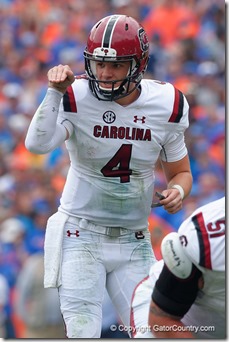
#4 SEC East, #11 SEC
6-7 (3-5) in 2016
Will Muschamp’s first head coaching job was at Florida, one of the best jobs in all of college football. Even though he had the unenviable task of replacing Urban Meyer, Muschamp went 11-2 in 2012, finishing third in the BCS standings at the end of the regular season before getting upset in the Sugar Bowl by Louisville. He followed that up with a nightmare season in 2013: Florida started the season 4-1 and lost their last seven games, including a three-score loss to Vanderbilt and a home loss to then-FCS Georgia Southern. The Gators went 7-5 the next year and Muschamp was fired.
After a successful one-year stint as Auburn’s defensive coordinator, Muschamp found his way to another SEC East coaching job. Again, he had to follow an extremely successful coach; unlike the situation he inherited at Florida, Steve Spurrier left the cupboard bare in Columbia. Spurrier had gone 33-6 from 2011 to 2013 (but never reached a BCS bowl), but the program slid to 3-9 in 2015 and Spurrier retired during the season. Muschamp did well to double the Gamecocks’ win total in his first season.
South Carolina turned things around midseason after Muschamp took the redshirt off true freshman Jake Bentley (who enrolled a year early) – USC went 4-2 down the stretch in the regular season and the offense ran much more smoothly as Bentley completed 66% of his passes in OC Kurt Roper’s dink-and-dunk offense. Another freshman, RB Rico Dowdle, received more carries late in the season and emerged as the #1 option in the South Carolina backfield. All in all, the Gamecocks had one of the worst offenses in the SEC last season (averaging just 20.8 points per game), but they were much better with Bentley in charge, and with ten starters returning, they should improve as their young players gain experience and maturity.
Muschamp’s expertise is on the defensive side of the ball, but South Carolina struggled against the run last season, and even though LB Skai Moore – an All-SEC type player – missed the season with an injury, the rest of the front seven stayed healthy for the most part. Enormous JUCO DT Javon Kinlaw could help shore up the interior, joining seniors Ulric Jones and Taylor Stallworth inside. The Gamecock defense was good against the pass, ceding very few big plays (perhaps partly because opponents were content to keep the ball on the ground), and three of the four starters return in the secondary.
Muschamp’s hire was initially met with a lukewarm-at-best reception and even though he’s been able to build solid defenses throughout his coaching career, Florida’s inept offenses during his tenure – as well as South Carolina’s offensive struggles last season – are reason for concern. Since they’re in the East, and since most of the programs in the division have huge questions of their own, USC could break into the top half of the division – if Bentley continues to improve and a young team gels in the second season under their new coach. Still, Muschamp skepticism is warranted: if he couldn’t succeed at Florida, what are the odds that he’ll succeed at a tougher job in the same division?
42. WASHINGTON STATE
#4 Pac-12 North, #8 Pac-12
8-5 (7-2) in 2016
Mike Leach is now entering his sixth season at Washington State: the first three were rough (12-25 total with one bowl appearance), but he’s righted the ship since then – even though they’ve dropped the opener against an FCS opponent in each of the last two seasons, 9-4 in 2015 and 8-5 in 2016 represent significant improvement from the prior decade in Pullman. It’s modest success, and it’s almost exactly where Leach was at Texas Tech, based on his average record there. They’ll usually face an uphill battle in the Pac-12 North; still, they had a shot at the division title in the last week of 2016’s regular season – before losing the Apple Cup at home to Washington, 45-17.
There are few characters in college football as unique as Mike Leach, all the way down to his extreme brand of Air Raid offense. He finally found his QB before that turnaround season in 2015 – Luke Falk, now a senior, who’s thrown for 4,561 yards, 38 touchdowns, 69% accuracy and 4,468 yards, 38 touchdowns, 70% accuracy in his two year as a starter. Two of Falk’s top targets are gone, but replacing receivers has never been an issue for Leach. The former walk-on quarterback is the key and with him marshaling a very pass-heavy (but mostly horizontal) attack, the Cougars should be set on offense. Despite the relative lack of a ground game, Washington State has three solid running backs who each totaled at least 88 carries, 478 yards, and 5 touchdowns last season. The offensive line has improved over the course of Leach’s tenure and should be solid.
Defensive coordinator Alex Grinch was hired before the 2015 season and it paid dividends, as they improved from awful to simply below-average. Washington State had a disruptive front seven last season, and it mitigated their leaky secondary; with nine starters back (and nine of the top ten leading tacklers), further improvement should be expected. Junior DE Hercules Mata’afa is the headliner of the group: he had 13.5 tackles for loss in 2016 and has posted 12 sacks over his first two seasons – the only credible threat in what’s generally an anemic pass rush. Plenty of junior college transfers are scattered across the two deep, as is typical of Leach teams.
Last season, Washington State lost its first two games (against FCS Eastern Washington and more understandably @ Boise State) before winning eight in a row… then lost its last two against each Pac-12 division champ and dropped a stinker of a bowl game against Minnesota. Other Pac-12 North programs overshadow the Cougars – Washington and Stanford are the frontrunners and Oregon made an intriguing hire in Willie Taggart – but Leach has carved out a niche at Washington State; even if they don’t seriously compete for the North, they’re likely to make a bowl for the third straight year.
41. NORTHWESTERN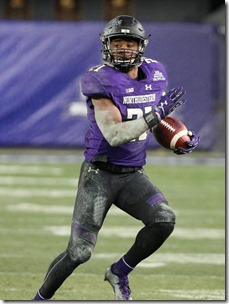
#5 Big Ten West, #9 Big Ten
7-6 (5-4) in 2016
Pat Fitzgerald is still only 42 years old, which makes it hard to believe that he’s been Northwestern’s head coach for over a decade. In his first season in charge, he faced these coaches in Big Ten play: Joe Paterno, Jim Tressel, Lloyd Carr, Joe Tiller, Brett Bielema, Ron Zook, John L. Smith, and Kirk Ferentz – the only Big Ten coach with a longer tenure. Northwestern’s been better than their historical average under Fitzgerald, and his 10-3 campaigns in 2012 and 2015 were two of the better seasons NU has ever had. He’s done well in raising Northwestern’s floor, considering the constraints of being at a resource and prestige disadvantage, but he still hasn’t contended for a division title, let alone a conference championship.
Fitzgerald might have a team that could make a surprise run at a Big Ten West title this season. After a weak non-conference schedule, the Wildcats open conference play with what could be their two toughest Big Ten games: at Wisconsin, then home against Penn State. The Badgers are the obvious division frontrunner, so Northwestern may need to pull the upset in Madison – going up a game on UW and more importantly earning the tiebreaker over them – to stay in the race.
Last season, Northwestern rebounded nicely after a 1-3 start (including a 9-7 loss to FCS Illinois State), challenged Ohio State in Columbus, and won a bowl game over Pitt, a quality opponent. They have most of the 2016 team back: QB Clayton Thorson improved a lot as a passer last season and will be a third-year starter; RB Justin Jackson has run for 4,129 yards and 30 touchdowns in his career; they return four starting offensive linemen and add a grad transfer with starting experience; star WR Austin Carr, who burst onto the scene a year ago, is gone, but some depth remains. Thorson will find things to be more difficult since he can’t rely on Carr – and his further development will be critical, even though Jackson will likely get an absurd workload again.
Once again, Northwestern defense should be better than the offense, but there are more questions on that side of the ball. Last season, their typically solid pass defense slid a bit – all four starters return in the secondary and two of NU’s top pass rushers are back as well. LB Anthony Walker is gone as well, so the Wildcats’ stout run defense will need to find a new backbone – that may be LB Nate Hall, who was third in tackles on the team in 2016. Fitzgerald’s had consistently decent, mostly bend-don’t-break defenses during his tenure, and that won’t change in 2017.
The next installment of this series will include fellow Big Ten West programs Minnesota, Iowa, and Nebraska – those three plus Northwestern form a closely clustered group that’s vying for the best shot to topple Wisconsin.
August 15th, 2017 at 12:37 PM ^
At first I was happy with these posts because I thought "Hey, Alex thinks MSU is gonna be a top 50 power 5 team!"
Now I'm pretty sure you just forgot about MSU...
August 15th, 2017 at 12:40 PM ^
he is just covering the power 5 teams
August 15th, 2017 at 1:54 PM ^
August 15th, 2017 at 1:41 PM ^
August 15th, 2017 at 1:58 PM ^
Sparty is going to be in the Top 40 (let alone top 50). Top 40 is a team that is locked in to a Bowl with 7-8 regular season wins. Michigan State will have to fight hard just to get to 6-6.... I suppose you can put them at 39, but I would see that as a huge strech.......
August 15th, 2017 at 2:01 PM ^
August 15th, 2017 at 2:09 PM ^
If I am reading his weighting averages correctly....
1/3 - 2016 alone
1/3 - 2014 - 2016 average
1/3 - 2013- 2016 average
That still has 2016 as the heavy influence. It certainly looks like MSU is coming up an an outlier........
August 15th, 2017 at 2:20 PM ^
August 15th, 2017 at 3:42 PM ^
This is a key point. Both ND and MSU had the records they did partially because of relatively bad luck in close games.
August 15th, 2017 at 2:23 PM ^
I just went straight to the team comments and didn't realize it was a formula until you pointed it out. Now Wazzu at 42 and behind Sparty makes some sense. If they played this year I think the Coogs would be a double digit favorite.
August 15th, 2017 at 6:56 PM ^
Oh snap!
August 15th, 2017 at 12:42 PM ^
August 15th, 2017 at 12:43 PM ^
There's zero chance Michigan State is a top 40 team this year.
August 15th, 2017 at 2:07 PM ^
August 15th, 2017 at 2:22 PM ^
I read yesterday that Comparoni projects two walk-ons to start on the DL for them
August 15th, 2017 at 3:25 PM ^
was a walk on. So Michigan had one and a half on the d line. Ryan was that good.
August 15th, 2017 at 1:35 PM ^
August 15th, 2017 at 1:55 PM ^
I'll be interested in the reasoning for MSU over NW.
August 15th, 2017 at 1:58 PM ^
Pretty sure some of you are overreacting, thinking MSU will be awful this year. They had a "what can go wrong, will go wrong" year last year. They won't challenge for the Big Ten by any means, but they still have a great coach and some good athletes on that team.
August 15th, 2017 at 2:27 PM ^
They've also had a "what can go wrong, will go wrong" offseason too. Who really knows what type of team they will be.
August 15th, 2017 at 2:43 PM ^
Who really knows what type of team they will be.A bad one.
August 15th, 2017 at 3:08 PM ^
I should've went into more detail, but I was thinking 6-6 was the ceiling with 3-9 being the floor.
August 15th, 2017 at 2:03 PM ^
August 15th, 2017 at 3:03 PM ^
Well if the got dang data machine thinks MSU is gonna be a top 40ish team, who am I to argue with that
August 15th, 2017 at 2:23 PM ^
West Virginia is #20 in the Preseason Coaches Poll. Remains to be seen who's off on that one. #goodoleboysclub or #analytics?
August 15th, 2017 at 10:34 PM ^
If it's just a formula based on the last 4-5 years, then in what sense is it a preview? What's the point?
August 17th, 2017 at 12:01 AM ^
Proving that the universe just makes no damn sense at all.
Comments